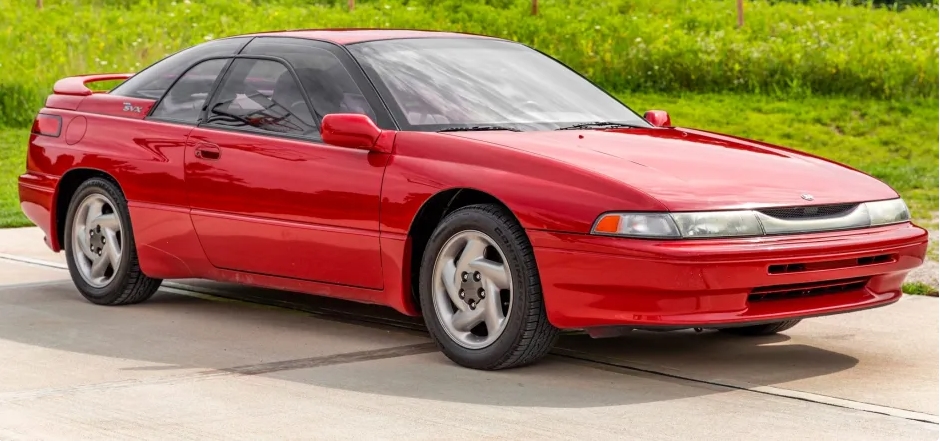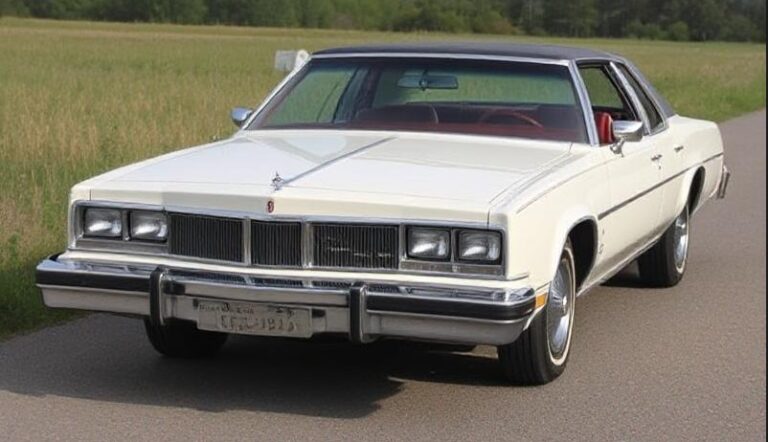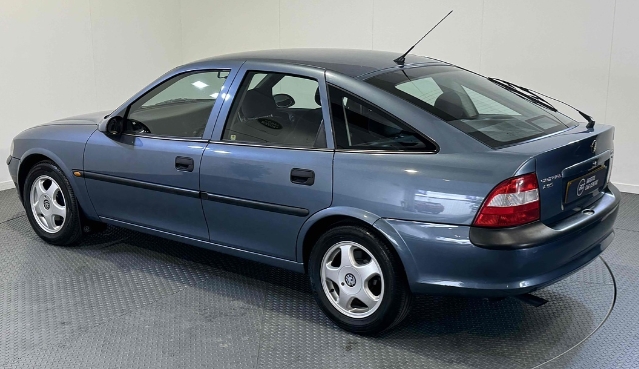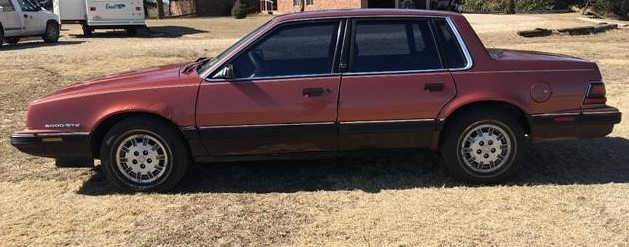The Alcyone’s Final Flight: The Ambitious Evolution of the Subaru SVX
In the heady, bubble-economy days of the late 1980s, Japanese automakers were flush with cash and brimming with ambition. It was an era of technological audacity, where companies dared to build cars not just for the market that existed, but for a future they envisioned. Toyota had the Supra, Nissan the 300ZX, and Mazda the RX-7. Subaru, a brand known for its quirky, utilitarian, and dependable all-wheel-drive wagons, decided it was time to shoot for the stars. Their moonshot was the Subaru SVX, a grand touring coupe so futuristic, so unconventional, and so brilliantly flawed that its story remains one of the most fascinating in automotive history.
From Avant-Garde Concept to Production Reality
The journey of the SVX began at the 1989 Tokyo Motor Show. Subaru, whose performance heritage was still in its infancy, unveiled a stunning concept car called the “Subaru Vehicle X,” or SVX. Penned by the legendary Giorgetto Giugiaro of Italdesign—the same mind behind the DeLorean DMC-12 and the Lotus Esprit—the concept was a sleek, aerodynamic masterpiece. Its most defining feature was an “aircraft-inspired” glass-to-glass canopy, which created an uninterrupted visual flow from the windshield to the rear window. To facilitate this radical design, it featured a peculiar “window-within-a-window” setup, where only a small pane of glass lowered into the door.
The public and press were captivated. Encouraged by the reception, Subaru made the bold decision to put the SVX into production with astonishingly few changes. When the production car, officially named the Subaru Alcyone SVX in Japan and simply SVX in North America, debuted for the 1992 model year, it was a near-perfect replica of Giugiaro’s vision. With a drag coefficient of just 0.29—impressive even by today’s standards—it looked like nothing else on the road. It was a spaceship that had landed in a Subaru showroom.
The Heart of the Machine: A Unique Drivetrain
Beneath its avant-garde bodywork, the SVX was a showcase of Subaru’s engineering prowess. Eschewing the turbocharged four-cylinders that would later define the brand’s performance image, Subaru developed a new, sophisticated engine specifically for its flagship coupe. The EG33 was a 3.3-liter, dual-overhead-cam, 24-valve horizontally-opposed six-cylinder engine. This “boxer-6” was smooth, refined, and produced a healthy 231 horsepower and 228 lb-ft of torque. It was designed not for raw, neck-snapping acceleration, but for effortless, high-speed cruising—the hallmark of a true grand tourer.
This potent engine was paired exclusively with a four-speed automatic transmission. This decision would become the SVX’s tragic flaw in the eyes of many enthusiasts. Subaru simply did not have a manual transmission in its parts bin that could reliably handle the EG33’s torque while accommodating the all-wheel-drive system. The lack of a third pedal immediately distanced the car from the hardcore sports car segment, placing it firmly in the luxury GT category.
The SVX featured one of two advanced all-wheel-drive systems, a core tenet of the Subaru brand:
ACT-4 (Active Torque Split): The standard system, it used a multi-plate transfer clutch to vary the torque distribution between the front and rear axles. Under normal conditions, it sent 90% of the power to the front wheels, but could shift up to a 50/50 split when slippage was detected.
VTD (Variable Torque Distribution): A more performance-oriented system introduced later, VTD used a planetary center differential and a hydraulically controlled clutch. It maintained a constant 36/64 front/rear torque split (later revised to 45/55), giving the car a more dynamic, rear-drive feel.
A Year-by-Year Evolution: Trims and Changes (1992-1997)
The SVX’s production run was short, lasting from the 1992 to 1997 model years in the United States. During this time, the trim levels and equipment were shuffled several times as Subaru attempted to find the car’s market footing.
1992: The Grand Debut
The inaugural year saw the SVX offered in three distinct trim levels, though one was exceptionally rare.
LS: The base model, though “base” was a relative term. It came standard with all-wheel-drive, automatic climate control, a premium AM/FM/cassette stereo, power windows and locks, and 16-inch alloy wheels. The interior featured high-quality moquette cloth upholstery.
LS-L: The premium, fully-loaded model. It added a leather-trimmed interior, an eight-way power driver’s seat, a power tilting and sliding glass sunroof, and a rear spoiler. Some models also featured a CD player in addition to the cassette deck.
L (FWD): To offer a lower price point, Subaru produced a very limited number of front-wheel-drive SVX models for the 1992 model year only. Designated the “L” trim, these are the rarest of all production SVXs, with fewer than 500 believed to have been sold in the US. They are visually identical to the LS but lack the rear driveshaft and differential.
1993: Staying the Course
The 1993 model year was largely a carry-over from the successful launch year. The same three trims—L (FWD), LS (AWD), and LS-L (AWD)—remained. Minor changes included new exterior color options and small interior revisions. The car continued to garner praise for its design and comfortable ride, but sales figures were already showing signs of trouble. The SVX was expensive for a Subaru, with the top-tier LS-L pushing into territory occupied by brands like Lexus, Acura, and BMW.
1994: A Major Restructuring
Recognizing the market’s confusion and slow sales, Subaru significantly restructured the SVX lineup for 1994.
The rare FWD “L” and the base AWD “LS” models were discontinued.
Two new AWD trim levels were introduced: L and LSi.
L: This became the new entry-level model. It was essentially a de-contented version of the previous LS-L, featuring cloth upholstery and often omitting the rear spoiler and sunroof to keep the price down. It retained the standard ACT-4 all-wheel-drive system.
LSi: This became the sole premium model, carrying over all the features of the previous LS-L, including leather, sunroof, and a spoiler. The most significant upgrade for the LSi was the introduction of the VTD all-wheel-drive system, giving it a more sporting character than the L model. Additionally, dual front airbags became standard on all models this year.
1995: Refinement and Simplification
The lineup was further simplified for 1995. The two-trim structure remained, but the base model’s name was changed from “L” to L S to reduce confusion with the original FWD “L” from 1992-93.
L S: This model now received the same 16-inch alloy wheels as the top trim, improving its visual appeal. It continued with cloth seats and the ACT-4 AWD system.
LSi: The premium model remained unchanged, carrying the leather interior, sunroof, and the performance-oriented VTD all-wheel-drive system. A subtle redesign of the front grille marked the only significant exterior update for the model year.
1996: The Beginning of the End
The SVX entered 1996 with its lineup intact (L S and LSi trims), but it was clear the end was near. Sales had never met Subaru’s optimistic projections. The car was now OBD-II compliant, as mandated by federal law. To spur interest in the aging model, Subaru of America created a special 25th Anniversary Edition package for the LSi trim, which included unique floor mats and badges. Despite these efforts, production was already winding down.
1997: The Final Farewell
The 1997 model year marked the official end of the SVX’s journey. There was no new production for this year; all 1997 models were simply leftover 1996 vehicles sold and titled in the next calendar year. Only 640 SVX units were sold in the US as 1997 models, making them the rarest model year. By the end of 1996, the production line in Ōta, Japan, had ceased building the futuristic coupe. In total, just over 14,000 SVXs were sold in the United States over its six-year run.
.
RepairSurge Online Repair Manuals Replace Bulky Books With Reliable Digital Information!
Faster And Cheaper Than Traditional Printed Manuals, Users Get Instant Access To The Repair Information They Need For Any Car, Truck, Van or SUV:
.
Legacy of a Beautiful Failure
The Subaru SVX was, by all commercial metrics, a failure. Its high price tag alienated traditional Subaru buyers, while the lack of a manual transmission and the unfamiliar badge kept it from seriously competing with established luxury and sports car brands. It was a car caught between worlds—too luxurious to be a pure sports car, too strange to be a mainstream luxury coupe.
Yet, decades later, the SVX’s legacy is not one of failure, but of beautiful, unbridled ambition. It remains a testament to a time when a company known for practicality dared to build something purely for the sake of art and engineering. The EG33 engine was a marvel of smoothness that laid the groundwork for future Subaru flat-sixes found in the Outback and Tribeca. The Giugiaro design is timeless; the car still looks futuristic today, turning heads wherever it goes.
Today, the Subaru SVX is a celebrated cult classic. Owners and enthusiasts cherish it for the very qualities that led to its demise: its unique design, its refined powertrain, and its defiant individuality. It was Subaru’s flight of fancy, a brief, brilliant moment when the Pleiades star cluster on its grille truly represented a company reaching for the cosmos.







